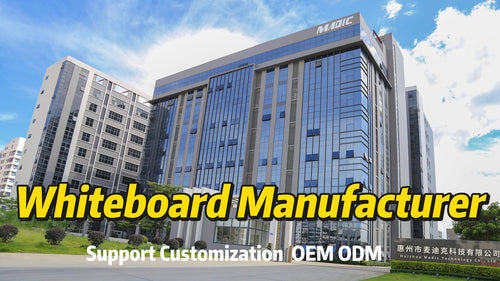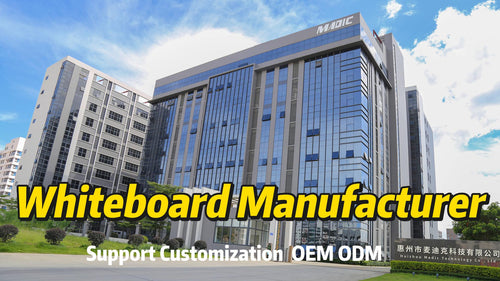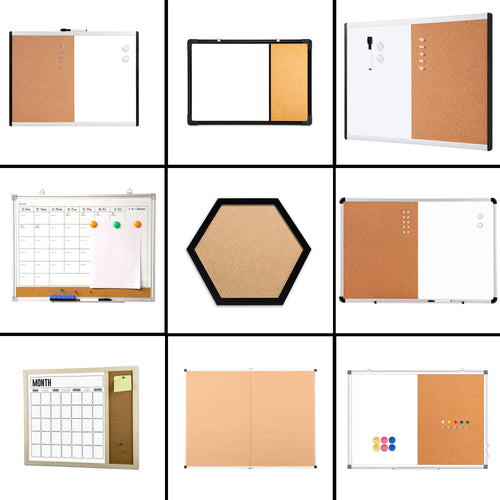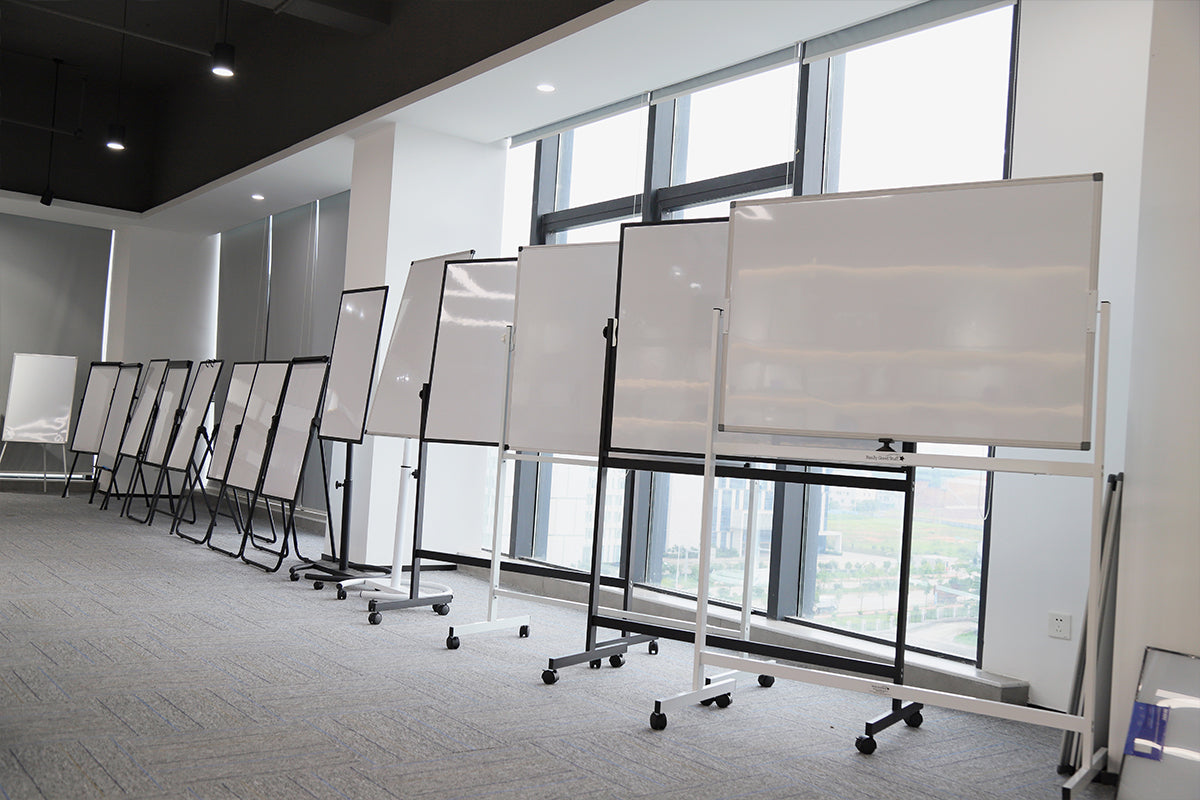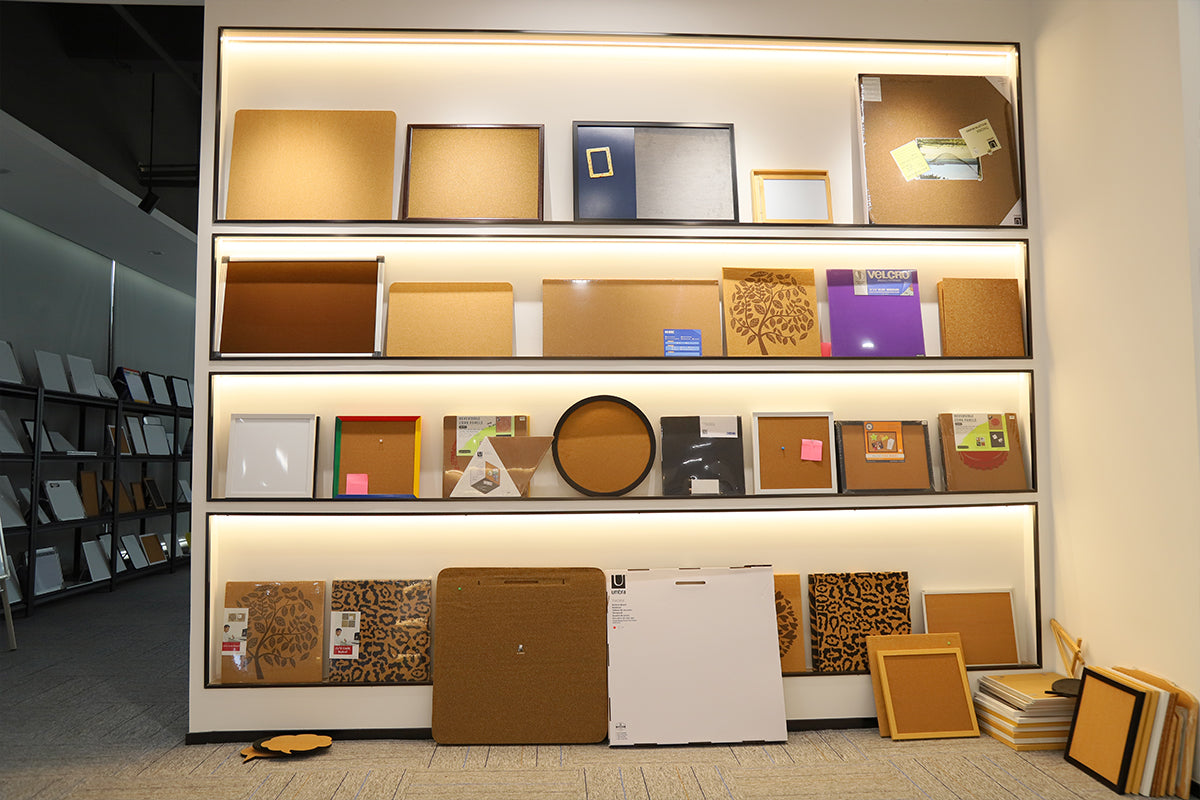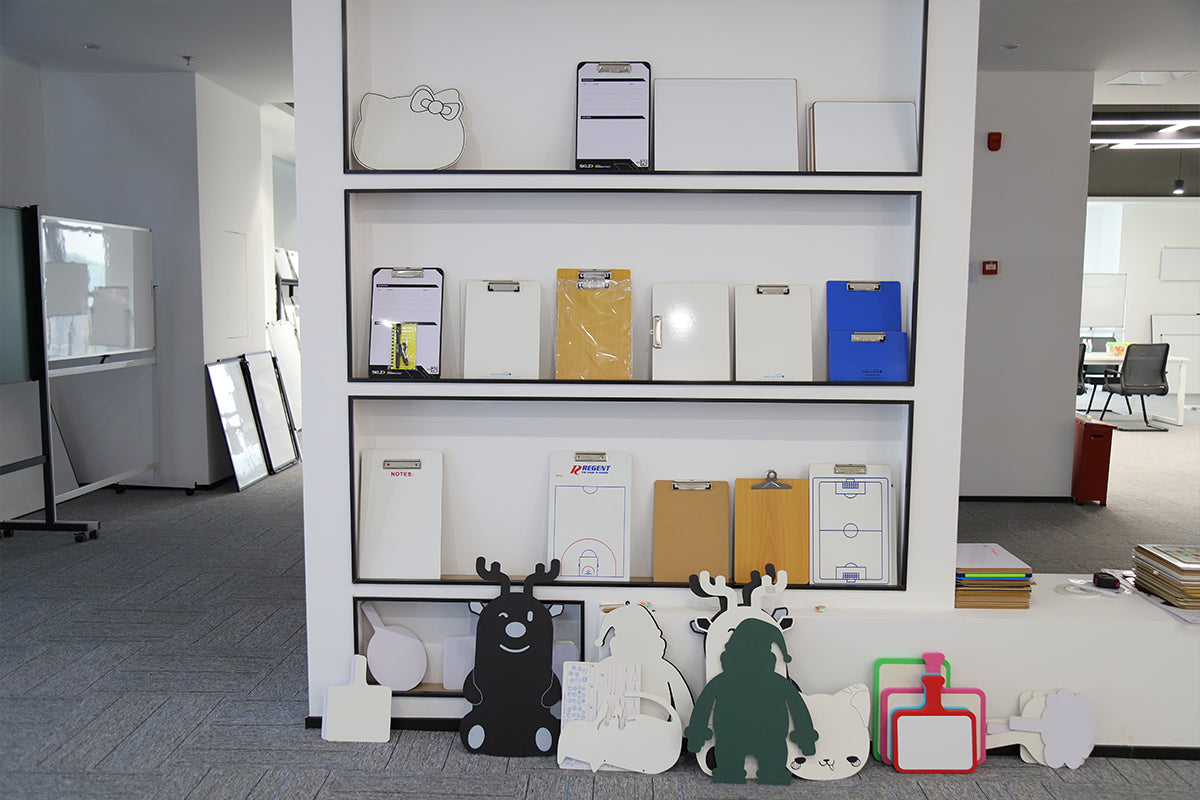Understanding the Core Materials of Magnetic Whiteboards
The construction of a magnetic whiteboard typically consists of a writing surface, layers, and a backing board. The choice of materials for each layer directly impacts its writing performance, durability, and user experience. Among these, the core materials of the layers play a crucial role.
-
Melamine Board:
Melamine board is one of the commonly used core materials for magnetic whiteboards. It is made by impregnating paper and compressing it through various processes, resulting in a smooth surface with excellent wear and stain resistance. This material not only ensures a smooth writing experience but also effectively prevents dirt from adhering, making it easy to clean. Another significant advantage of melamine board is its good resistance to deformation, maintaining stable performance under different temperatures and humidity levels.

-
Paperboard:
Paperboard is another relatively economical and practical choice for core materials. It is typically made from multiple layers of paper that are bonded together using special processing techniques, enhancing its strength and toughness. Although paperboard may not be as wear-resistant as melamine board, its lightweight and easy handling characteristics make it a preferred material for some lightweight magnetic whiteboards. Additionally, the environmental friendliness of paperboard is gaining attention, aligning with sustainable development trends.

-
Foam Board:
Foam board is an emerging core material that is characterized by its lightweight and good shock-absorbing properties. The structure of foam board provides a certain level of impact resistance, making it suitable for settings where frequent movement and transportation are necessary. Its downside is that compared to other materials, foam board has lower wear resistance; prolonged use may lead to wear and aging.
By understanding these core materials, we can choose the appropriate magnetic whiteboard to meet different needs. When purchasing, it is advisable to consider factors such as the frequency of use and the environment, as well as personal requirements for durability and ease of cleaning, in order to select the product that best fits your needs. Regardless of the material chosen, proper use and maintenance can extend the lifespan of the magnetic whiteboard, allowing it to play a greater role in teaching and working environments.

